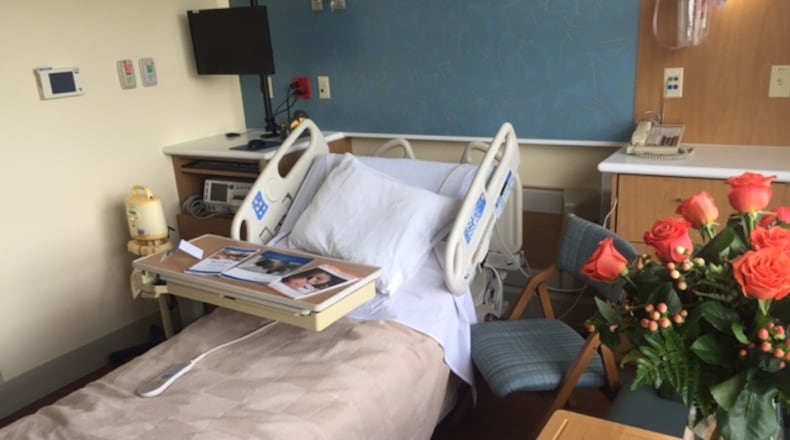“More than half of pregnancy-related deaths occur in the 12-month postpartum period, many of which are preventable,” Ohio Department of Medicaid Director Maureen Corcoran said in her announcement of the program. “Women who have recently given birth have health needs that continue for a full year, and high-risk pregnancy-related complications such as preeclampsia, blood clots, and heart problems may not appear until months after delivery.”
About half of Ohio births are covered by Medicaid. That’s because women can have an income above the typical Medicaid cutoff — 200% of the federal poverty level — and still qualify during pregnancy.
Previously, the criteria went back to the typical limits at 60 days after birth. But that cutoff often meant a disruption in relationships with a medical provider and disruption in care still being received.
When the American Rescue Plan passed, it included federal support for states that expand Medicaid coverage eligibility for women until their baby’s first birthday, and Ohio took the chance to expand the program.
Several maternal health advocacy groups have supported this change, saying it could help address the complex problems that drive maternal mortality and severe maternal morbidity in Ohio.
In 2019, when Ohio released its first report in years on maternal mortality, it found over half of pregnancy-related deaths in Ohio were preventable. And Black women died at a rate more than two and a half times that of white women.
The leading causes of death related to pregnancy in Ohio from 2008 to 2017 were cardiovascular and coronary conditions at 14%, followed by infections at 13%, hemorrhage 12%, mental health conditions at 11%, preeclampsia and eclampsia at 10%, according to Ohio Department of Health data.
Emma Smales, birth outcomes manager at Public Health - Dayton & Montgomery County, said many issues like infection or high blood pressure can become health problems further down the line from birth.
“It’s not just death that we’re concerned about. It’s also any kind of health issue that a new mom faces,” Smales said.
She said this is also tied to infant health. For example, women still might need breastfeeding help after the 60-day period.
“Having the coverage to be able to go and see a lactation consultant at any point is really, really helpful,” she said.
The new option took effect April 1 for Ohio. After five years, the state can decide whether to renew.
By the numbers: Ohio Medicaid
14,000: Estimated number of women each year that Ohio Medicaid estimates will continue eligibility through the extended postpartum coverage
200% of the federal poverty level: Medicaid pregnancy and postpartum coverage eligibility limit
731: Pregnancy-associated deaths in Ohio from 2008 to 2018. 30% were pregnant at time of death, 20% had been pregnant within 42 days of death, and 50% had been pregnant within 43 to 365 days of death.
SOURCE: Ohio Department of Health
About the Author

